Information Center
- Main page
- Information Center
- Government News
Government News
- Source
- KOREA.net
- Date
- 2024.11.08
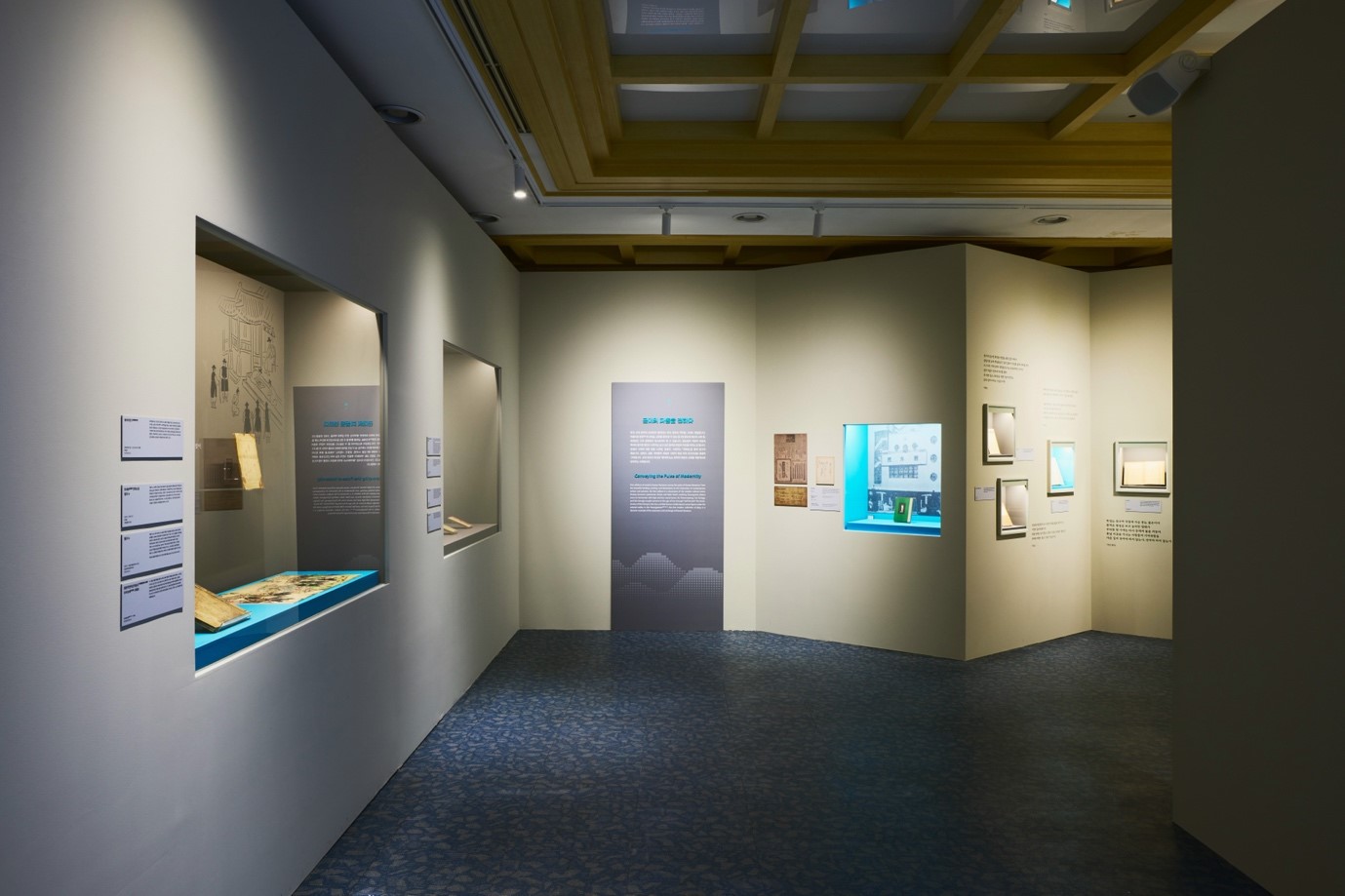
The exhibition "The Pulse of Korean Literature" runs through Nov. 24 at Chunchugwan, which was used as a media center at Cheong Wa Dae, the former presidential compound in Seoul. (National Museum of Korean Literature)
By Gil Kyuyoung
Han Kang on Oct. 10 was named the first Korean laureate of the Nobel Prize in Literature, instantly catapulting the nation's literary scene from the sidelines to the global stage.
In a phone interview with the Swedish Academy, she said she grew up reading books both in Korean and translated versions, adding that the books that she read searched for "meanings in life" and that "all their strengths have been my inspiration."
Her historic honor is apparently the fruit borne by the roots of Korean literature from long ago.
"The Pulse of Korean Literature," an exhibition of the history of domestic literature at Cheong Wa Dae, the former presidential compound in Seoul, offers a rare chance to see original books, documents and literary items normally inaccessible to the public.
The exhibition is an opportunity to glimpse at the roots of the nation's literary content amid Korea's rise as a global content power. Korea.net on Oct. 26 visited Chunchugwan, the former media center at Cheong Wa Dae, to look around the event.
Entering Chunchumun Gate led to the scene of many visitors. Getting past the crowd and going to Chunchugwan to see the exhibition resulted in a far calmer atmosphere.
Ahn Jae-yeon, head of the exhibition operations bureau of the National Museum of Korean Literature, gave a guided tour of the event that day. She said the exhibition marks the museum's fifth anniversary, with some 70 rare items on display carefully selected from the estimated 110,000 pieces in the museum's collection.
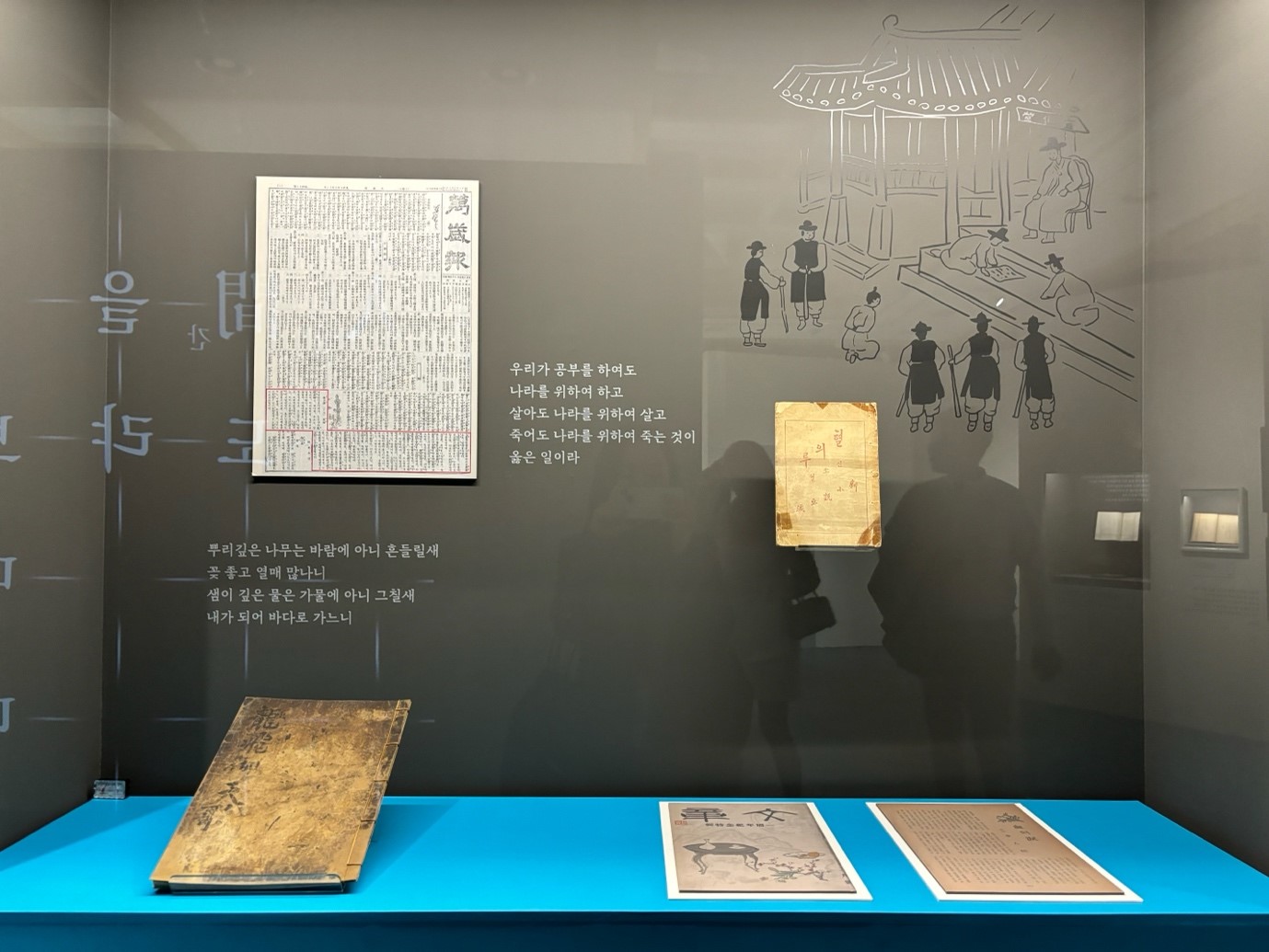
On the left is the 1612 version of "Yongbieocheonga" (Song of Dragons Flying in Heaven), the first printed work in Hangeul, and on the right is the 1908 version of Lee Injik's "Tears of Blood," which is considered the nation's first modern novel. (Gil Kyuyoung)
Visitors upon entry into the exhibition hall were greeted by old books printed on woodblocks. The first section of the exhibition comprised works showing transitions in the country's literary history.
A familiar sentence was "A deep-rooted tree does not sway in wind," a quote from "Yongbieocheonga" (Song of Dragons Flying in Heaven), the first work published in the Korean alphabet Hangeul. Written during the reign of King Sejong the Great, this relic lists the achievements of the king's six ancestors from King Mokjo to Taejong as an important work showing the roots of Korean literature.
Also on display were print editions and newspaper sources of Lee Injik's "Tears of Blood," the country's first modern novel, and Yi Kwang-su's "Mujong" (The Heartless), the nation's first modern full-length novel. Both works are often covered in school textbooks.
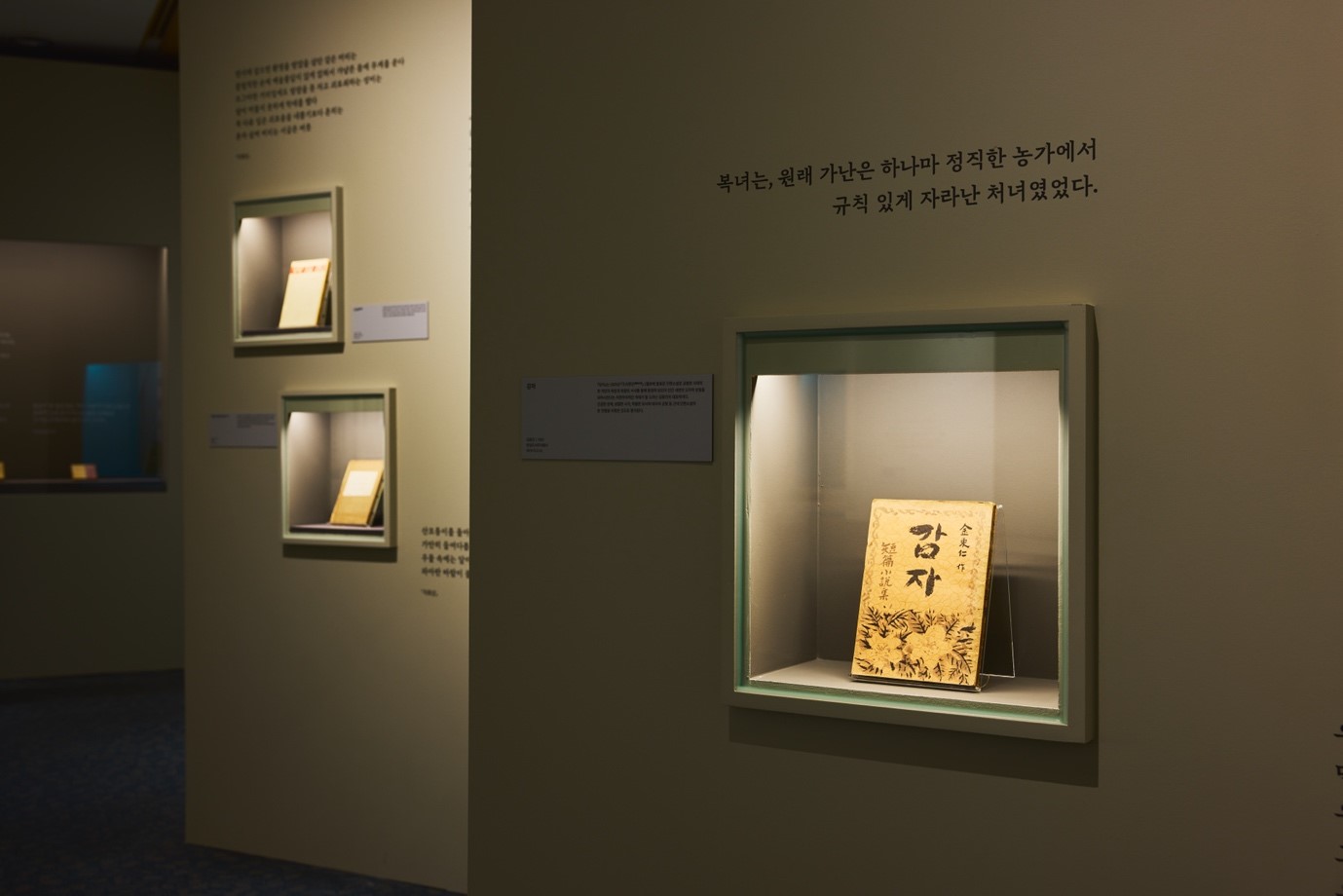
Shown is a copy of Kim Dong-in's short story "Potatoes" (1935). (National Museum of Korean Literature)
The exhibition's second section showed modern works featuring beautiful binding and printing techniques. One was Baek Seok's poetry collection "Deer" singing the praises of the folk world by using the dialect of Pyeonganbuk-do Province in present-day North Korea.
"The poetry collection was the talk of town soon after its publication," Ahn said. "One story says (renowned poet) Yoon Dong-ju had to transcribe the collection because he couldn't buy it."
On one side were leading modern novels works from the 1920s to 30s, with Kim Dong-in's "Potatoes" standing out. This work is considered to have laid the basis for domestic short novels through a concise writing style, level-headed perspective and adequate portrayals.
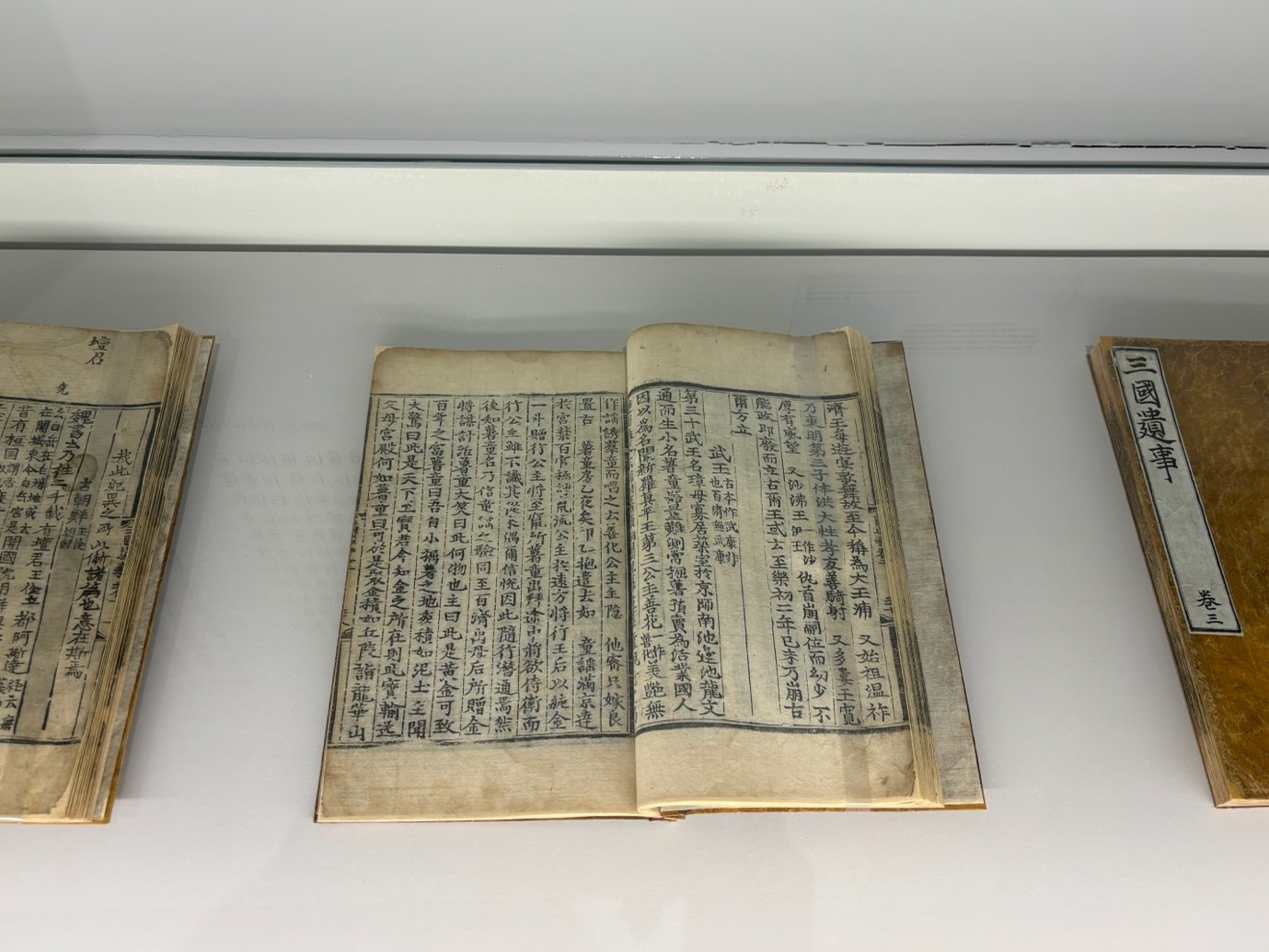
This is the 1512 version of Samguk Yusa (Memorabilia of the Three Kingdoms). (Gil Kyuyoung)
The third section displayed leading works from the Goryeo (918-1392) and Joseon (1392-1910) dynasties. Samguk Yusa (Memorabilia of the Three Kingdoms), a collection of historical texts from the Gojoseon Dynasty (2333 B.C.-108 B.C.) to the Later Three Kingdoms (892-936), is the first book containing the myth of Dangun, the founder of the Korean nation and first king of Gojoseon.
Another highlight is "Seodongyo" (Song of Seodong), a hyangga (form of verse) from the Silla Kingdom (57 B.C.-935 A.D.).
One must-see work was "Gosanyugo" (1791) by Yoon Seon-do. A poetry collection about a Confucian scholar who seeks to leave secular society and live in nature, this work has 250 poems including "Fisherman's Calendar" and 75 sijo (three-verse) poems.
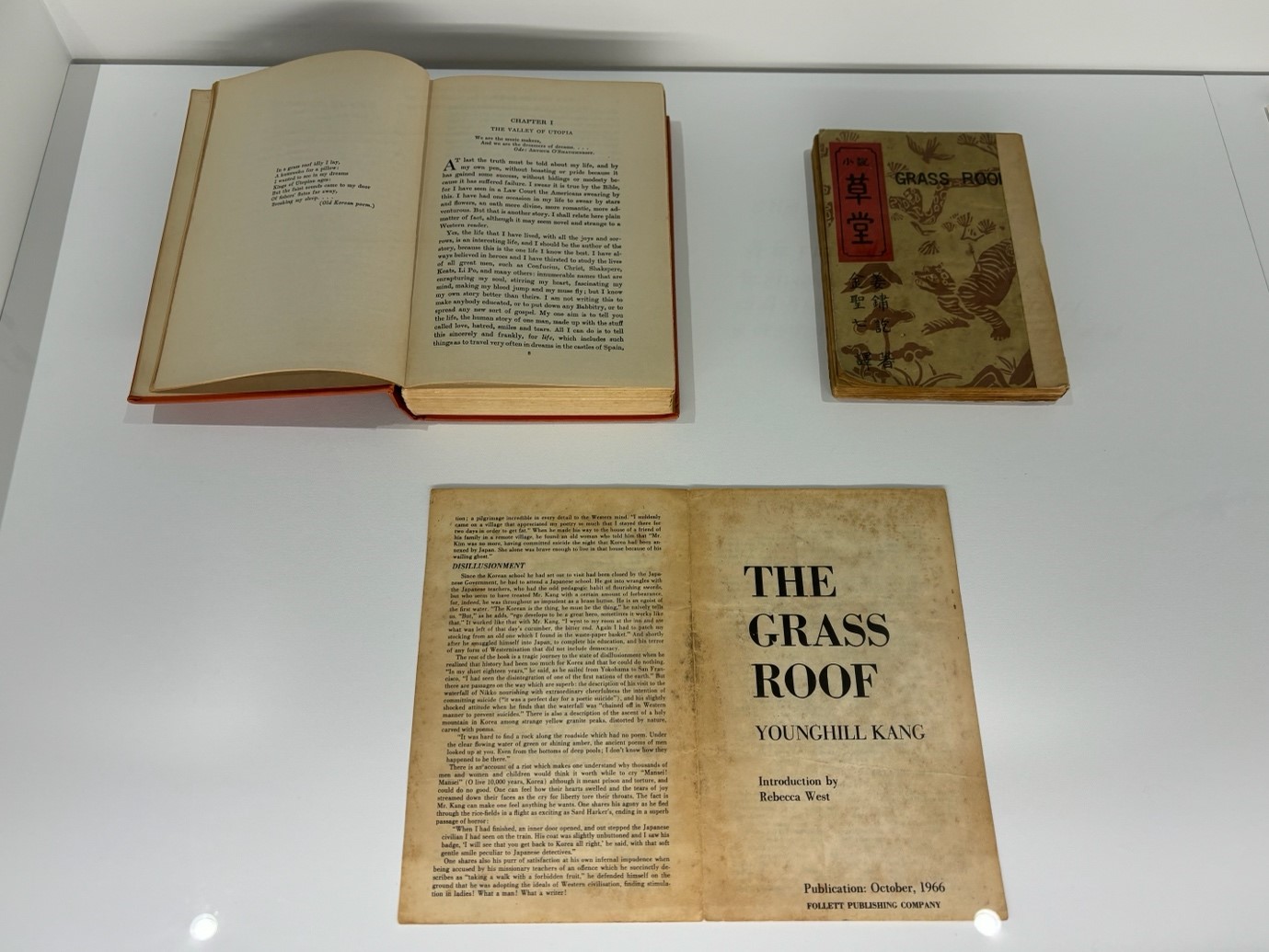
This is Kang Younghill's 1931 novel "The Grass Roof." (Gil Kyuyoung)
The fourth section covered literary works introduced abroad. The poetry collection of the 16th-century writer Huh Nanseolheon was the country's first by a female poet to be translated into another language.
"Heo Nanseolheon first became known through an envoy from China's Ming Dynasty, and later gained immense popularity in China and Japan," Ahn said.
Kang Younghill's 1931 English-language novel "The Grass Roof" promoted Joseon (Korea) to the West. In English rather than his native tongue, the author meticulously described aspects of Korean society like the spirit of Confucian scholars and the March First Independence Movement of 1919 against Japanese occupation of the Korean Peninsula.
American writer Pearl S. Buck called the book the "brightest wisdom of the East."
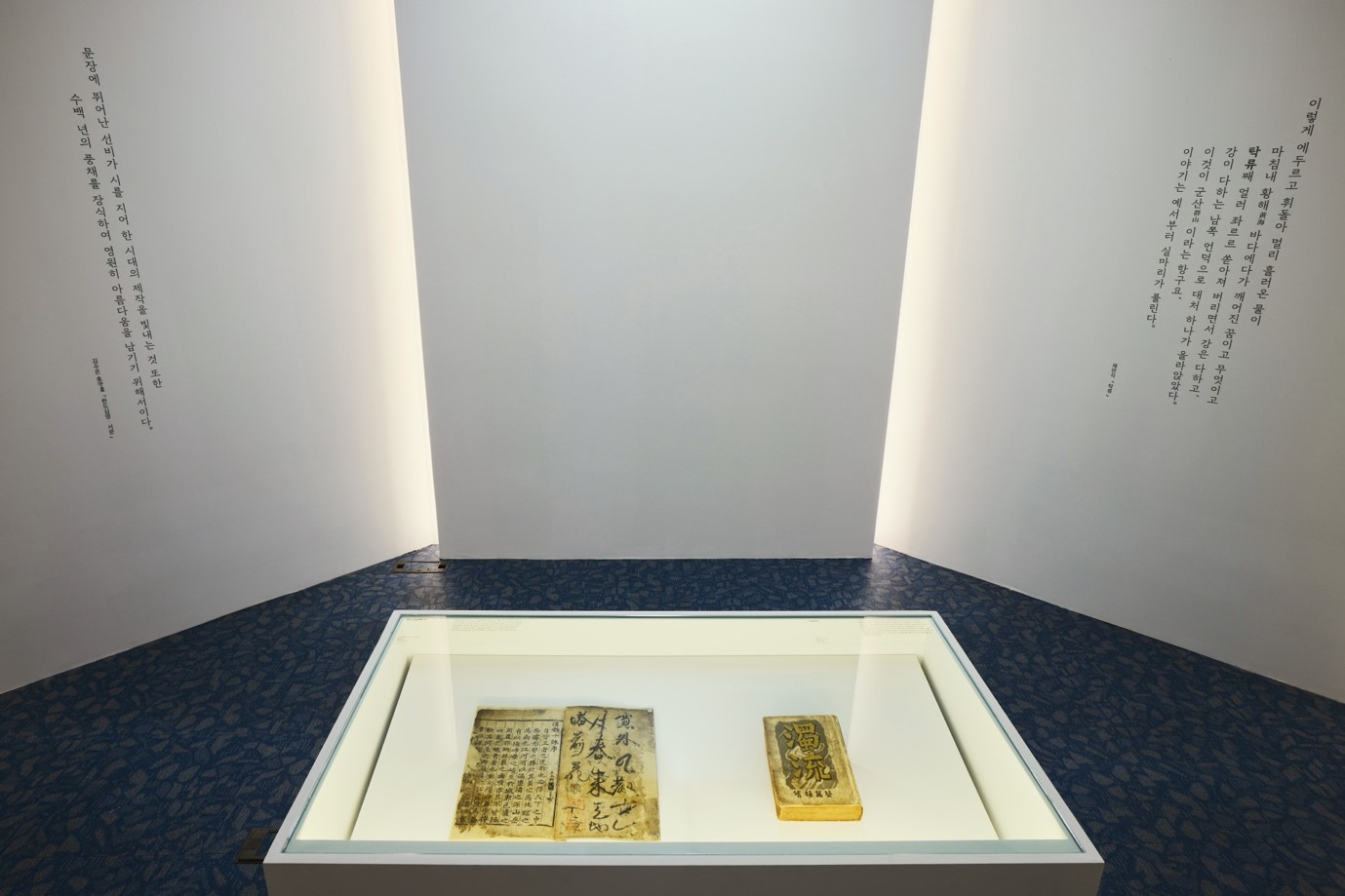
Turbid Rivers" (1939) by Chae Man-Sik is a novel on life in Korea during Japanese occupation. (National Museum of Korean Literature)
The fifth and final part of the exhibition featured original handwritten manuscripts and donated works owned by the museum. One of them was Yi Sang's handwritten manuscript in Japanese, "Hwang's Record - Work No. 2."
This poetry collection expresses strong opposition to Japanese colonialism. Ahn said, "This work not only depicts the human spirit predicting and confronting not only imperialism, but also the fear of materialism and science and technology."
Rarely seen works displayed included ceramics inscribed with poet Seo Jeong-ju's verses; the poetry collection "Handoshibyeong" showing 10 scenes of the capital Hanyang (Seoul) in the early Joseon Dynasty; and "Turbid Rivers," a leading realistic novel from the 1930s by Chae Man-Sik.
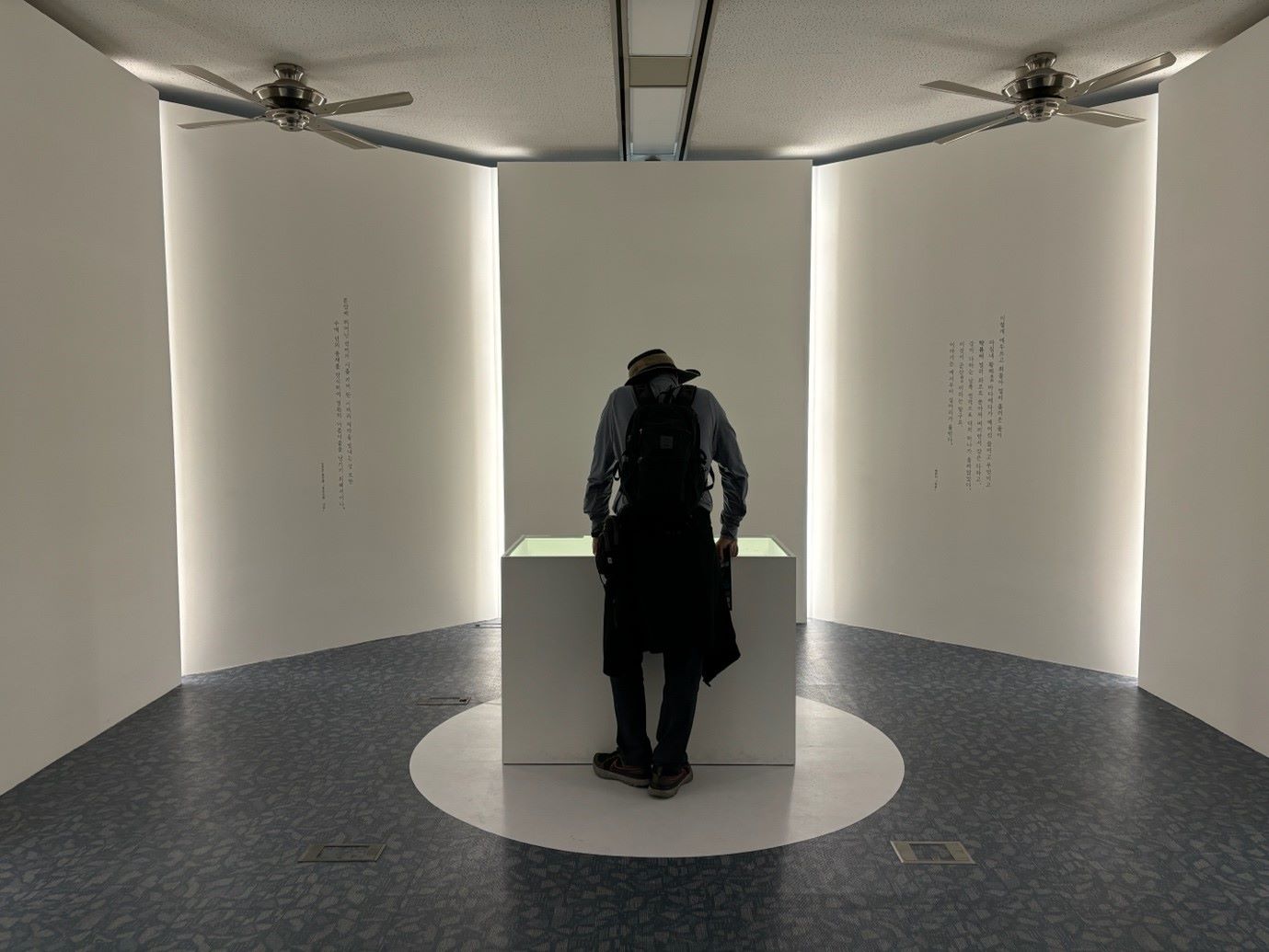
The exhibition "The Pulse of Korean Literature" offers a rare look at the roots of domestic literature. (Gil Kyuyoung)
Poet Lee Goo-cheol at the exhibition said, "I was touched to see the originals of high-quality works that I'd seen only in books," adding, "I hope that many schoolteachers and students visit the exhibition to see and understand Korean literature more in depth."
"The Pulse of Korean Literature" ends on Nov. 24.
gilkyuyoung@korea.kr